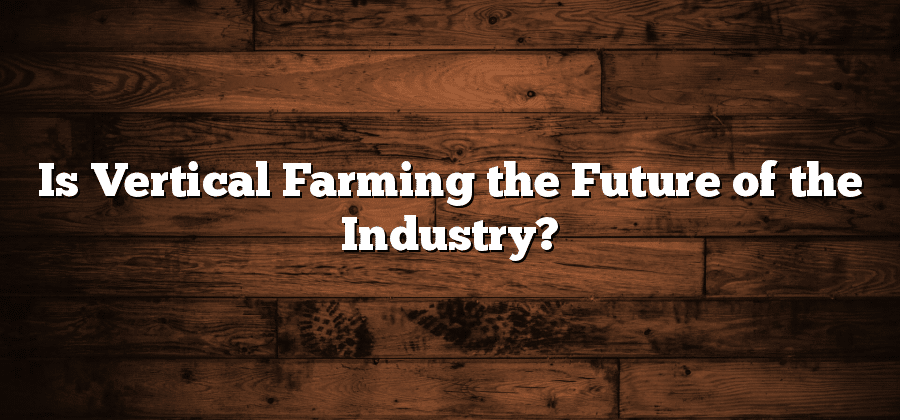Advantages of Vertical Farming
Vertical farming offers numerous advantages over traditional agricultural methods. One of the key benefits is the ability to maximize crop yield in a limited space. By using vertical stacking, crops can be grown in multiple layers, allowing for greater productivity per square foot. This is particularly important in urban areas where land availability is scarce. Additionally, vertical farming utilizes advanced technology, such as hydroponics or aeroponics, which provide precise control over the growing conditions. This enables farmers to optimize factors like temperature, light, and nutrient levels, resulting in faster growth and higher yields.
Another advantage of vertical farming is its potential to reduce the environmental impact of agriculture. With traditional farming, large amounts of land, water, and chemicals are required to grow crops. In contrast, vertical farming uses up to 90% less water than conventional methods, as it employs closed-loop irrigation systems that recirculate water. This not only conserves a precious resource but also minimizes water pollution from fertilizers and pesticides. Furthermore, vertical farms can be located within or near cities, reducing the need for long-distance transportation of produce. This helps to reduce greenhouse gas emissions and decrease reliance on fossil fuels.
Maximizing Crop Yield with Vertical Farming
Vertical farming is a revolutionary agricultural technique that holds great promise for maximizing crop yields. In traditional farming methods, crops are typically grown in large, open fields, where they are vulnerable to various environmental factors such as weather conditions, pests, and diseases. However, vertical farming takes a completely different approach by growing crops indoors, stacked in multiple layers. This allows for a controlled environment where temperature, humidity, and lighting can be optimized to create the most favorable conditions for plant growth.
By utilizing vertical space and implementing advanced technology such as hydroponics and aeroponics, vertical farming can significantly increase crop productivity. The vertical farming systems provide plants with a constant supply of nutrients, water, and light, which leads to faster growth and higher yields. Additionally, vertical farming allows for year-round cultivation, reducing dependence on seasonal changes and elongating the growing season. With the ability to stack the crops vertically, vertical farms can grow a larger number of plants in a smaller footprint compared to traditional farms, effectively utilizing limited land resources and maximizing crop yield.
Reducing Environmental Impact through Vertical Farming
One of the key advantages of vertical farming is its potential to significantly reduce the environmental impact of traditional agriculture practices. By growing crops in vertically-stacked layers, this innovative approach not only maximizes land use efficiency but also minimizes the need for large tracts of fertile soil. This means that vertical farms can be established in urban areas, eliminating the need for lengthy transportation of produce from rural farms to cities. Furthermore, vertical farming utilizes techniques such as hydroponics and aeroponics, which eliminate the need for excessive water usage and greatly reduce the risk of soil erosion and contamination. This environmentally-friendly way of farming also reduces the amount of chemical fertilizers and pesticides required, leading to healthier produce and cleaner ecosystems.
Another significant environmental benefit of vertical farming is its ability to curtail greenhouse gas emissions. Traditional agriculture is a major contributor to greenhouse gas emissions due to the use of fossil fuels in machinery, as well as the release of nitrous oxide from chemical fertilizers. In contrast, vertical farming operates on a much smaller scale and relies on renewable energy sources such as solar power. The controlled environment within vertical farms also allows for optimized carbon dioxide levels and minimal energy waste, further reducing the carbon footprint. By adopting vertical farming methods, we can mitigate the negative environmental impacts associated with conventional farming, contribute to climate change mitigation efforts, and pave the way for a more sustainable and greener future.
Addressing Food Security with Vertical Farming
Food security has become a pressing issue in recent times, with the global population steadily rising and available agricultural land diminishing. This has led to an increasing demand for sustainable food production methods that can meet the needs of a growing population. Vertical farming has emerged as a viable solution to address this challenge. By utilizing vertical space and advanced farming techniques, vertical farms can maximize crop yield while requiring minimal land area.
One of the key advantages of vertical farming in addressing food security is its ability to overcome the limitations of traditional agriculture. Vertical farms can be established in urban areas, allowing for food production closer to the consumers. This reduces the need for long-distance transportation, minimizing the time and resources required to bring the produce to the market. Additionally, vertical farming can operate year-round, unaffected by seasonal changes or adverse weather conditions, ensuring a continuous and reliable food supply.
Vertical Farming: A Solution to Urbanization Challenges
The rapid pace of urbanization has posed significant challenges for the food supply chain. As cities expand and land becomes scarce, traditional agriculture practices struggle to meet the increasing demands of urban populations. However, vertical farming has emerged as a promising solution to address these challenges.
One of the key advantages of vertical farming is its ability to maximize crop yield in limited space. By utilizing vertical space in towering structures, multiple layers of crops can be grown, effectively multiplying the productive capacity of the land. This vertical arrangement allows for year-round cultivation, independent of seasonal changes and adverse weather conditions. Moreover, vertical farming utilizes innovative technologies such as hydroponics and aeroponics, which enable precise control over nutrient and moisture levels, resulting in higher crop yields. By harnessing the power of vertical farming, urban areas can secure a sustainable food supply while minimizing the need for large-scale land consumption.






